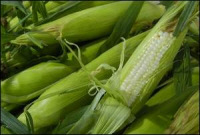



In Search of Synergy Between the Biofuels Industry and Livestock
ILLINOIS - The biofuel boom has launched agriculture into a new era, changing the dynamics of corn, beans and livestock.
"The conversion of corn and soybeans to fuel has the potential to create more change in agriculture than we've seen in the last 50 years," according to Larry Berger, University of Illinois' department of animal sciences.
"The reality is that the world is looking to agriculture to provide not only food, but fuel," in the words of University of Illinois College of Agricultural, Consumer and Environmental Sciences Dean Robert Easter. "The challenges are real. We need to increase the efficiency that we produce food, if we're going to be able to produce fuel."
Easter and Berger spoke at a Livestock Industry and Renewable Fuels conference in Champaign on May 23-24. The conference brought together energy experts, agronomists, economists, grain processors and animal nutritionists. Speakers discussed new developments and challenges facing biofuels and how to make it a win-win-win opportunity for grain and livestock producers, the biofuels industry, consumers and the environment.
Acknowledging the ongoing food vs. fuel debate, Berger said "it doesn't have to be one or the other." Farmers can take the same acre of corn or the same acre of soybeans and optimize production.
"The real challenge as we convert starch and oil to renewable fuels is that it reduces digestible energy available for livestock and poultry. Digestible energy costs will be much higher," said Berger.
Biofuels and livestock both need each other to be successful in the future, added Ken Dalenberg, a Mansfield farmer and vice chairman of the Illinois Soybean Association. Biofuels have a mountain of byproducts to get rid of, he pointed out.








